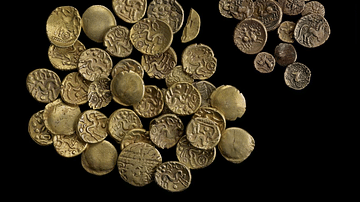In the annals of history, the trade routes that crisscrossed ancient Celtic Europe were not mere conduits for material goods; they were vibrant arteries pulsating with cultural exchange and economic vitality. These pathways, traversing verdant landscapes and rugged terrains alike, wove together a tapestry of commerce that shaped the destiny of this enigmatic civilization. Delving into the depths of time, we unravel the intricate threads that connected distant tribes and fostered an interconnected web of prosperity.
A Nexus of Trade: Uniting Diverse Peoples
Beyond its majestic landscapes and mystical allure, ancient Celtic Europe was a melting pot where diverse cultures converged. The bustling marketplaces served as meeting points for tribes hailing from far-flung corners – Gauls from present-day France mingled with Britons across the English Channel while Belgae ventured forth from their homelands to partake in this grand symphony of exchange. Through these encounters, ideas flowed like rivers meandering through fertile valleys, enriching societies with new perspectives on craftsmanship and innovation.
The Currency Conundrum: Barter or Coinage?
In an era preceding standardized currency systems as we know them today, bartering reigned supreme in ancient Celtic Europe. This primitive form of trade relied on mutual agreement between parties involved – livestock exchanged for tools or grain swapped for textiles. However, as commercial networks expanded and interactions intensified over time, coins emerged as tangible symbols representing value within this intricate ecosystem. From gold staters adorned with mythical creatures to silver denarii bearing regal visages – these precious tokens facilitated transactions beyond linguistic barriers.
An Abundance Beyond Borders: Natural Resources Galore
The bountiful lands inhabited by Celts bestowed upon them a wealth of natural resources, fueling their economic prowess. From the amber-rich shores of the Baltic Sea to the tin mines dotting the British Isles, these coveted treasures became sought-after commodities that fueled interregional trade. The Celts’ mastery in ironworking further enhanced their commercial standing, as they forged weapons and tools coveted by neighboring tribes. This abundance not only fostered prosperity but also kindled cultural diffusion as foreign goods found their way into Celtic households.
A Legacy Carved in Stone: Trade Routes Echo Through Time
As empires rose and fell, leaving behind ruins and forgotten tales, traces of ancient Celtic Europe’s vibrant commerce endure to this day. Archaeological discoveries unearth fragments of amphorae from Mediterranean lands alongside remnants of chariots used for long-distance travel. These tangible relics bear witness to an era when merchants traversed treacherous paths laden with risk and reward – connecting distant communities while shaping the destiny of nations.
In Conclusion: A Tapestry Woven by Commerce
The trade networks that crisscrossed ancient Celtic Europe were more than mere conduits for material exchange; they were conduits for cultural transmission and societal transformation. Through bustling marketplaces and intricate bartering systems, diverse peoples converged, ideas flourished, and economies thrived amidst a backdrop of abundant resources. Today, we can still hear echoes of this vibrant past through archaeological remnants scattered across time – a testament to the enduring legacy left behind by those who dared venture forth on these ancient trade routes.

